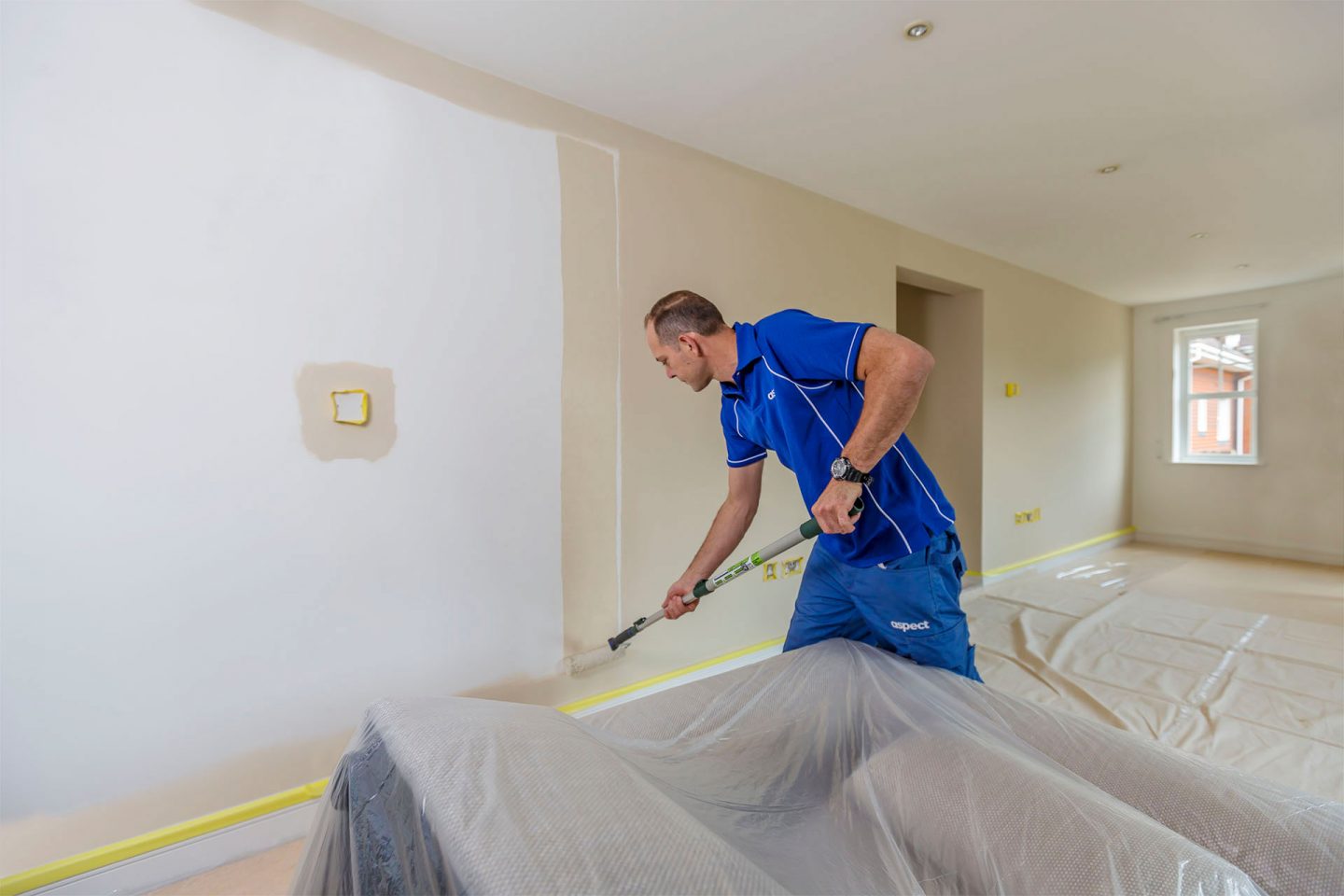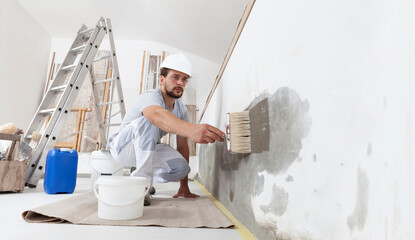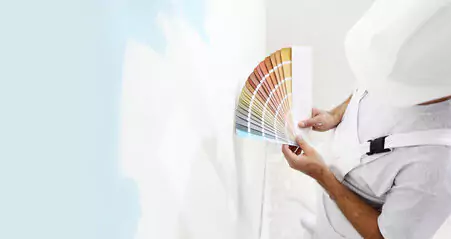A fresh coat of paint on your house adds curb appeal, and according to the International House Painting Association, it also increases resale value. It’s not easy to do a good job yourself, and hiring a professional Painting Service is essential. Exterior paints must resist moisture, ultraviolet radiation, and mildew. They contain additives to combat these issues.

The exterior of your home is the first thing that people see and should reflect your personality and style. A fresh coat of paint can instantly transform the look of your home. Our painters can take your home back to its original beauty or give it a completely different look with a bold color. We can even touch up or repair the trim, shutters, and front door to ensure everything looks as new as possible.
Curb appeal is important for your home’s value because it can help you sell it faster and at a higher price. Potential buyers can easily lose interest if the exterior of your home does not catch their eye. If your home needs some sprucing up, painting the exterior can improve its curb appeal and increase its overall value.
A fresh coat of paint is one of the best and most cost-efficient ways to add curb appeal to your house. It is also a great way to make your home stand out in the neighborhood and be the envy of all of your neighbors. However, it is important to keep in mind that you should not choose a color that does not go with the aesthetic of your neighborhood. It would be a good idea to consult with your local exterior painting company for the best advice when choosing an exterior paint color.
Besides adding curb appeal, exterior painting can also protect your home from the elements. Rain, sun and wind can wear down the materials of your house, leading to expensive repairs. The protective layer of your exterior paint helps to shield these materials and extend their lifespan.
If you are thinking of selling your home, a fresh coat of paint is an essential part of the preparation process. You want your home to be as appealing as possible when it is listed on the market, and a fresh coat of paint can make a big difference in how much you get for your house.
Durability
If you’re considering an exterior painting project, the durability of your paint is one of the most important factors to consider. Durability is based on several different things, including the type of paint you choose and how well it is applied. It is also influenced by the climate and weather where your house is located, as well as how long it has been since your last paint job was applied.
Exterior paint needs to be able to withstand moisture, extreme temperature changes, debris and more. It’s formulated with additives to help it resist fading, stains and mildew, as well as other damage caused by outdoor elements. These additives make exterior paint much more durable than interior paint, which doesn’t need to withstand as many harmful conditions.
During the exterior painting process, it’s best to avoid rushes or cutting corners when applying new layers of paint. Getting the previous coat to adhere properly is a crucial step in maintaining the longevity of your new paint job, so removing loose or peeling layers is essential. Thoroughly washing the surface with a cleaning product that removes mildew is another step that will contribute to the durability of your paint. You should also sand the surfaces down before you apply your new coat, as rough spots can cause paint to crack and chip more quickly.
You’ll also want to be sure that your painting professional is a reputable one and uses the best products. This will ensure that your paint job will look great for a long time and protect the surfaces underneath it. If you’re looking for a reliable painting company, you can use our free service to be matched with top-rated pros in your area!
When it comes to how often you should have your home’s exterior painted, experts agree that most homes need to be repainted every five to ten years. However, this timeline can vary widely based on where you live, your general climate and weather, and how well the previous paint job was done. These variables can lead to the paint on your house deteriorating faster or slower than other houses, so it’s best to consult with a local expert who can give you an accurate timeline based on the specific details of your situation.
Aesthetics
A fresh coat of exterior paint not only makes a house or building look great, but it can also increase its value. In addition, a new coat of paint can protect against the elements and other damage to the surface. It can also help to keep the wood from rotting, saving money on repairs in the future. A fresh coat of paint also makes the residents of a property feel more confident and optimistic, which can make them happier and more productive.
Aesthetics refers to the enjoyment of beauty and can include a variety of things, from natural objects and phenomena to built structures, utilitarian objects, and human actions. Historically, the scope of aesthetics has broadened over time, with a focus on popular arts and even incorporating everyday aesthetics.
Regardless of the material, exterior painting involves the same basic principles as interior painting, including proper prep and surface preparation, priming, caulking, sanding, scraping, and priming again. It is essential to follow these guidelines to ensure a smooth and even finish that will hold up over time. The use of high-quality products and tools is also important to achieve the best results possible.
In terms of aesthetics, the choice of color is one of the most important considerations when painting your home. Different colors can make your home look brighter or darker than it is, so the right choice is crucial. In addition, the style of your home can also influence the type of paint you choose. For example, if you have a brick home, you might want to consider using an oil-based primer and a latex exterior paint to prevent cracking.
If you have a stucco or masonry home, you should use a flat sheen paint that will allow the surface to breathe and release moisture. It is also critical to keep in mind that exterior paints do outgas or emit volatile organic compounds (VOCs) as they dry, so adequate ventilation during the painting process is necessary to avoid irritation to your lungs and eyes.
A fresh coat of paint can also add personality and curb appeal to your property, which can be especially beneficial if you are thinking of selling it in the future. In addition, a well-maintained property will show potential buyers that you care about your home and are willing to take the necessary steps to maintain it.
Maintenance
Many homeowners will be surprised to know that the most important element of an exterior paint job is not the painting itself, but rather the preparation and substrate care that precedes it. This is because a lot of the problems that are found in a residential exterior paint job are not actually due to the paint itself, but are caused by damage or deterioration that occurred before the actual painting.
Some of the most common problems that lead to a quick exterior paint failure are dirt, mildew and chalking. Dirt can discolor the paint and provide a fertile ground for the growth of mildew and other fungi. Over time, the dirt will also become a source of loose chalky pigment that causes the appearance of streaky rundown. Both of these issues can be prevented with regular scrubbing and power washing.
Mildew and mold can also cause a thinning of the paint film, which in turn leads to a rapid deterioration of the surface and can eventually result in cracking and peeling. These issues can be prevented with the use of mildew preventative additives in the paint or a fungicide in the cleaning solvent.
Over time, caulking can also deteriorate and may allow moisture to enter the walls. This can damage the wood and allow critters into the home. To prevent this from occurring, it is a good idea to have the caulking around the doors and windows replaced on a regular basis.
Generally, the average home will need to be repainted every six to ten years. However, this can vary depending on the environment and weather conditions. Homes located near the ocean or in hot climates will experience faster deterioration and will need to be repainted more often than homes that are not exposed to such harsh conditions. It is also recommended that homeowners conduct regular touch up painting to help protect the exterior of their home and keep it looking vibrant.







